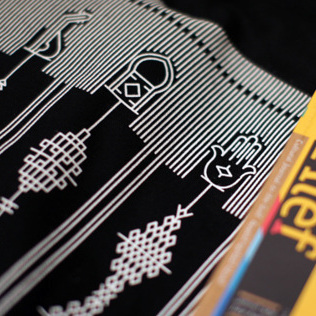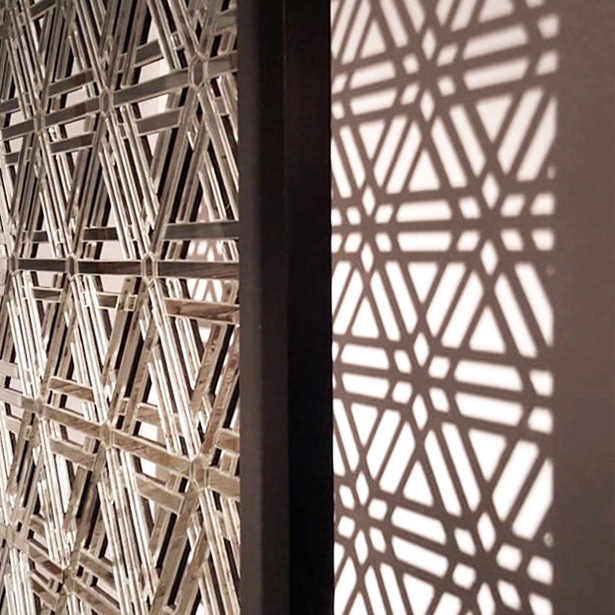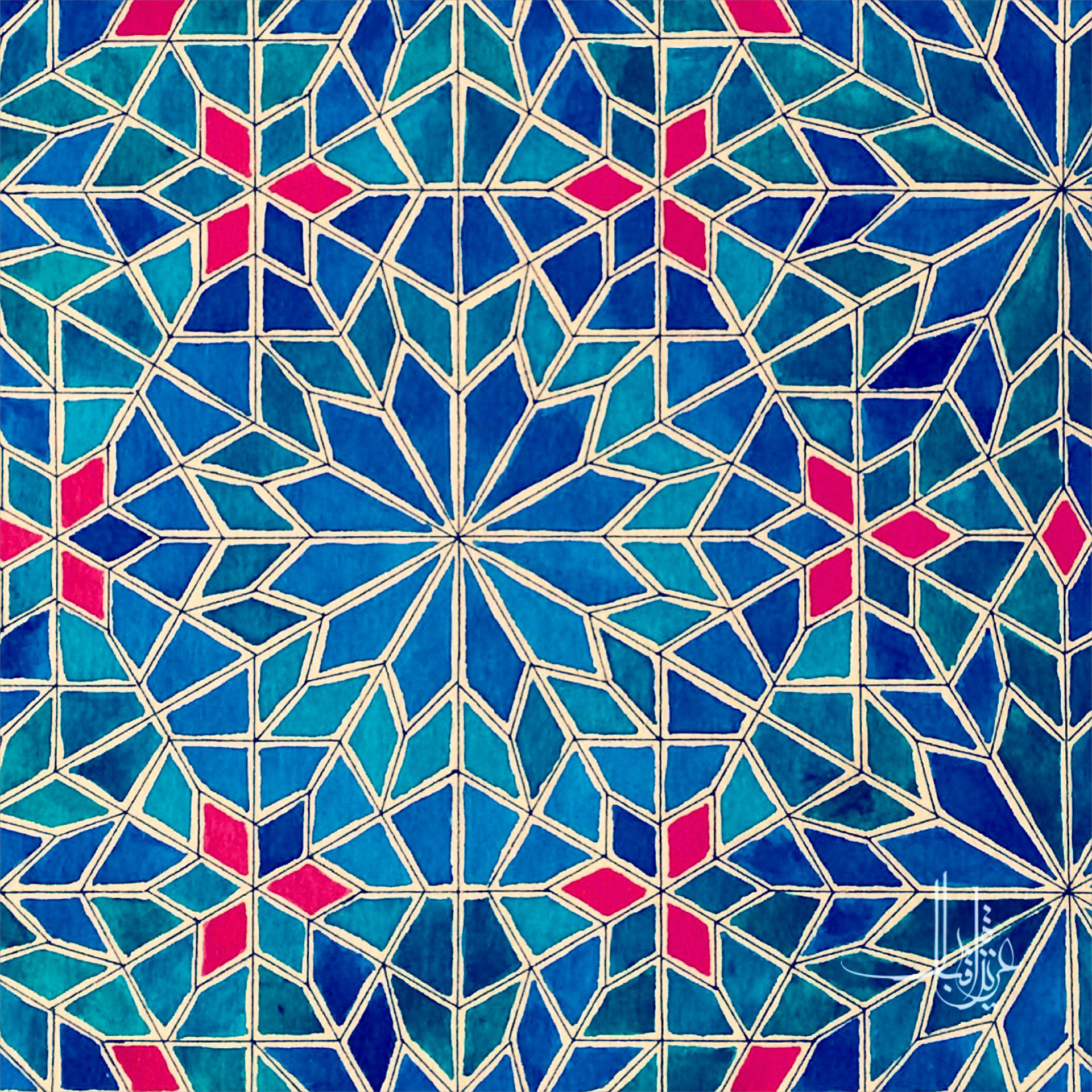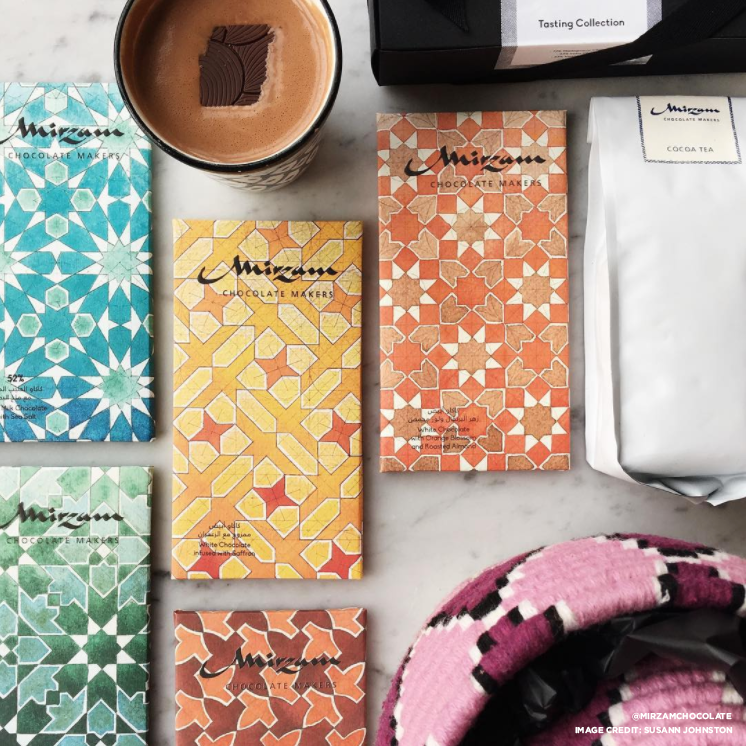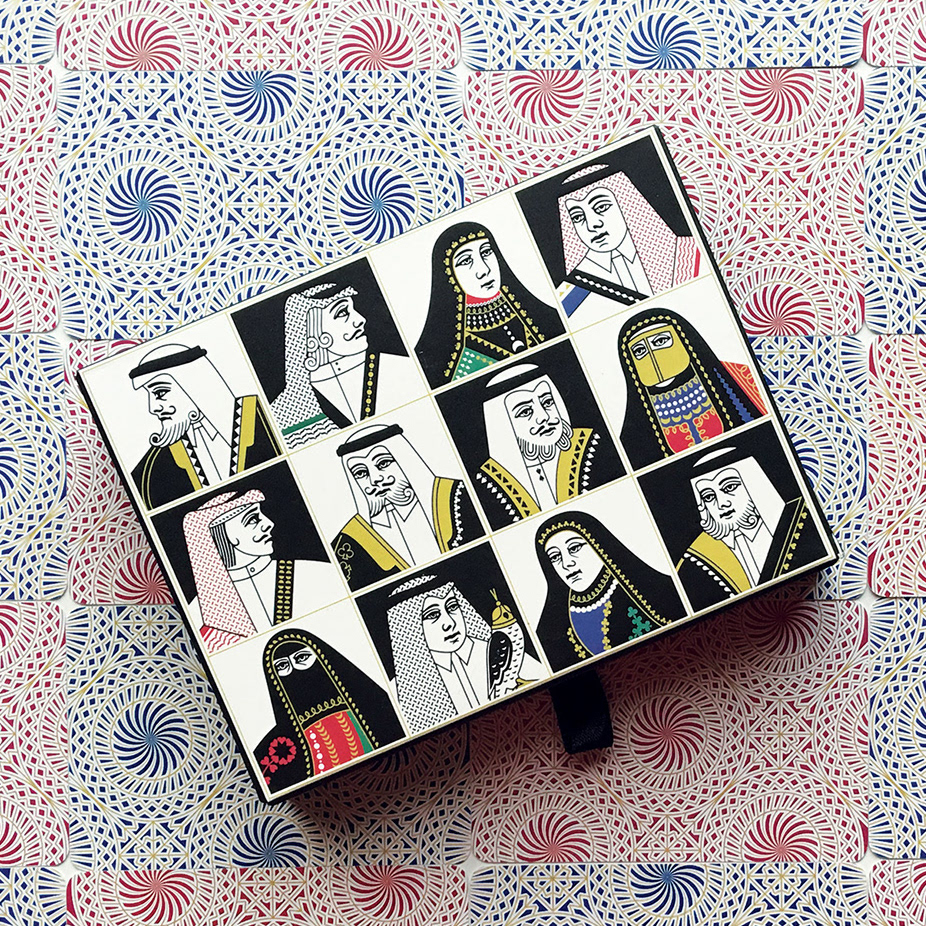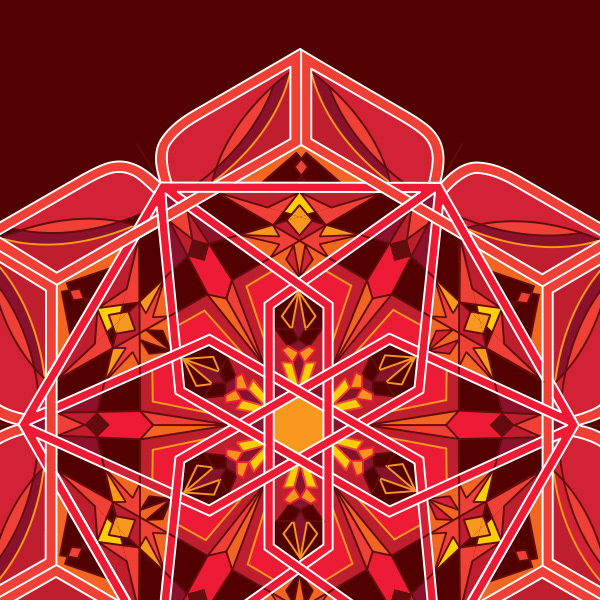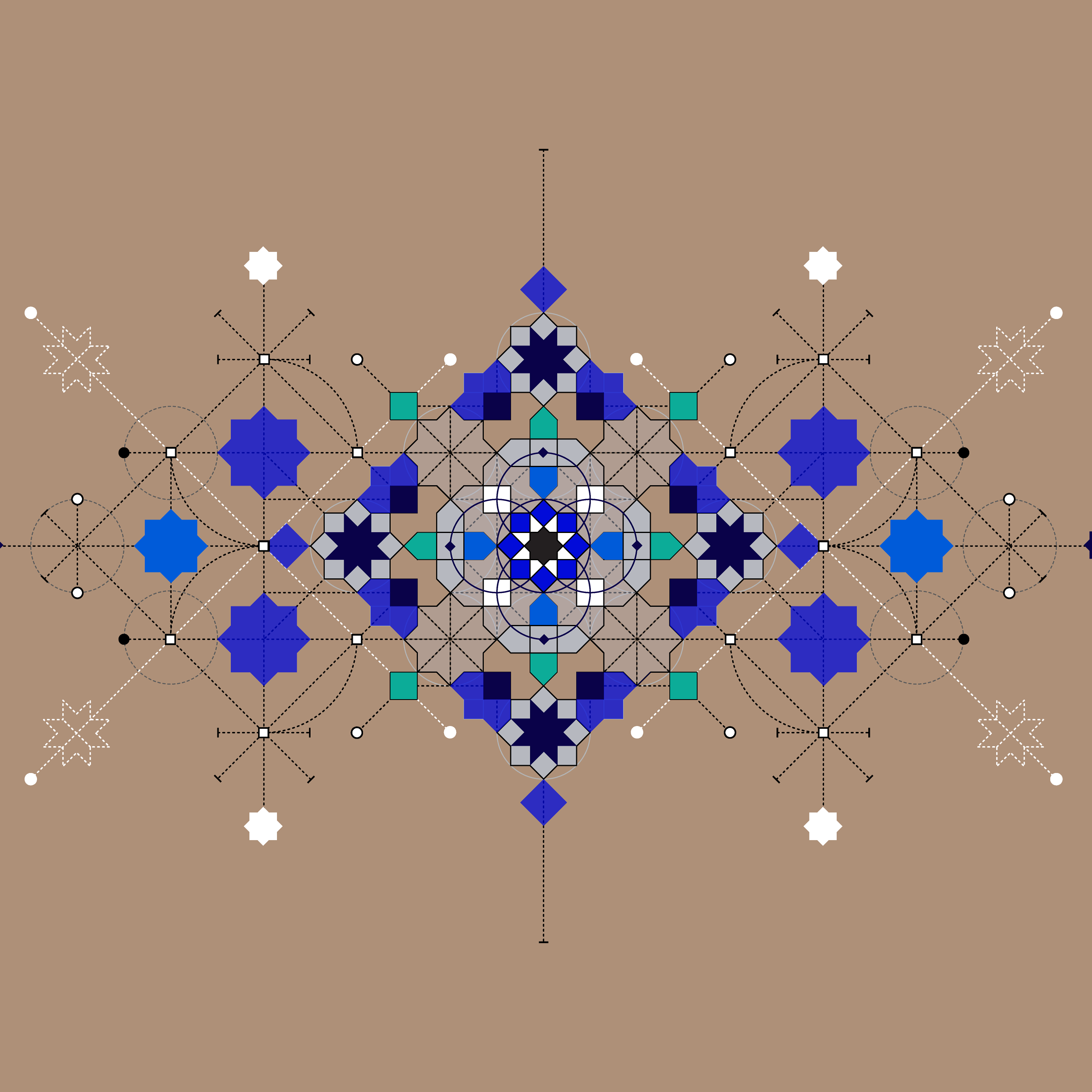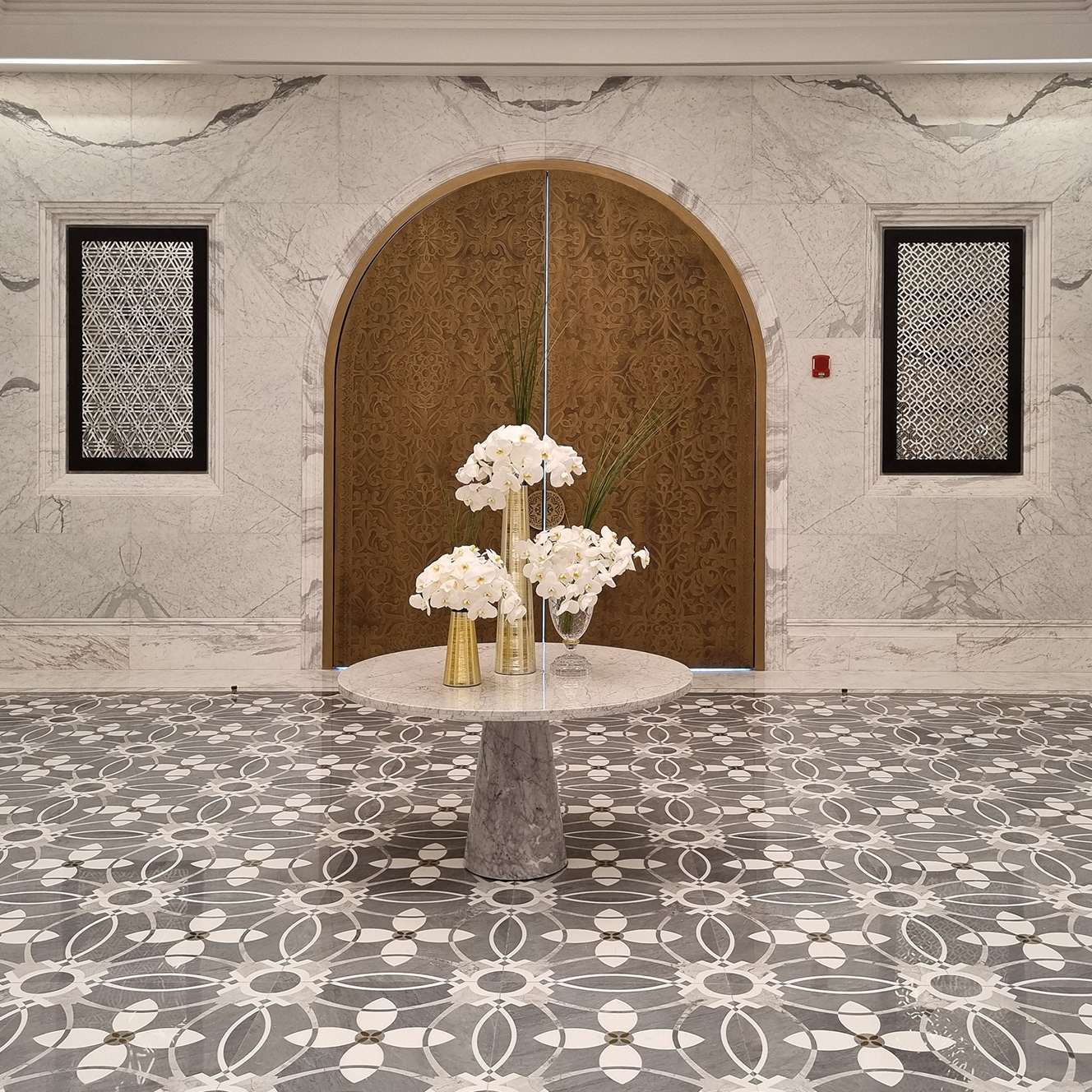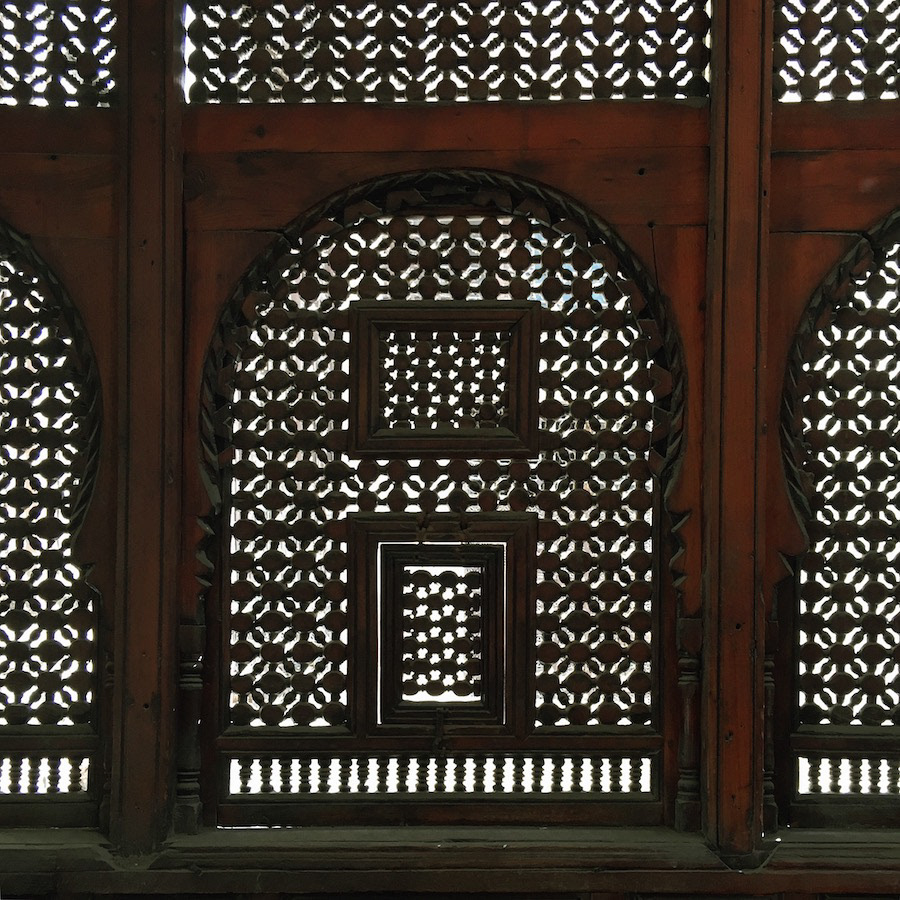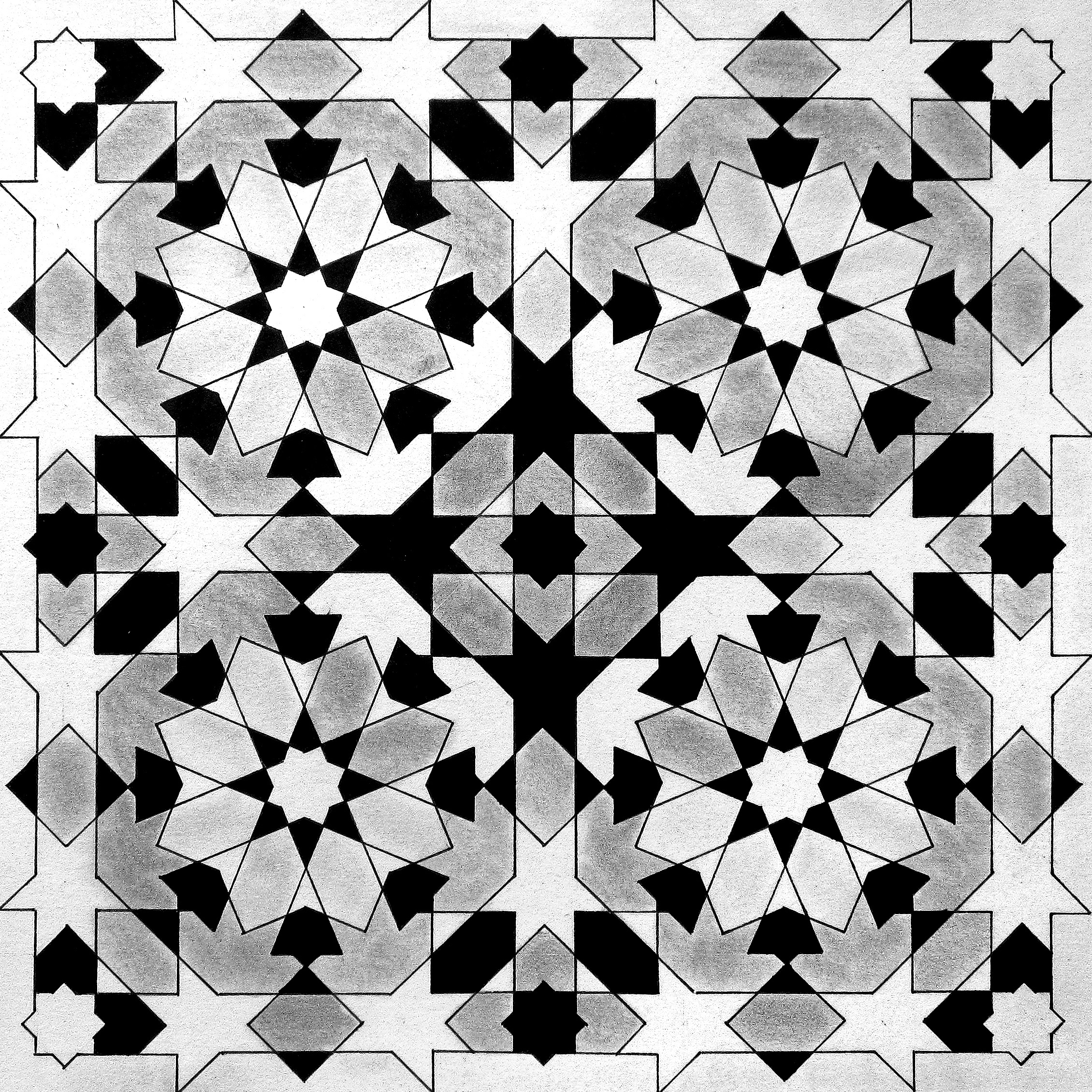Perforated lattice screens, or ‘jālis,’ are ubiquitous in the Indo-Islamic architecture of the Subcontinent. Filtering light, while providing their enclosures with privacy, they are some of the most elaborate design features particularly in Mughal buildings. The interplay of light, shadow, and pattern, has always one of my primary interests out of all the manifestations of Islamic art and architecture.
This growing collection aims to analyse and recreate classical examples of geometry of the Mughal style, and what makes it unique among the mastery of other Islamic geometric canons, such as the Seljuks, Moors, Mamluks or Persians.
-
Featured here are my analyses, drawings and studies from various Mughal monuments and a few paintings from 2015 to present.
-
For my mirror jaali work, click here
-
Monuments studied:
Humayun's Tomb, Delhi
It'imad Ud Daulah, Agra
Fatehpur Sikri
Emperor Akbar's tomb, Sikandra
Muhammad Ghouse tomb, Gwalior
-
All photos and analyses my own, unless mentioned otherwise.
-
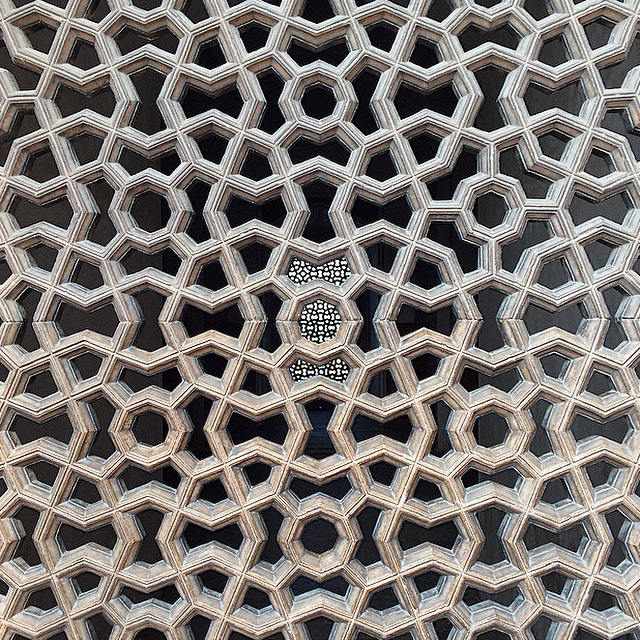
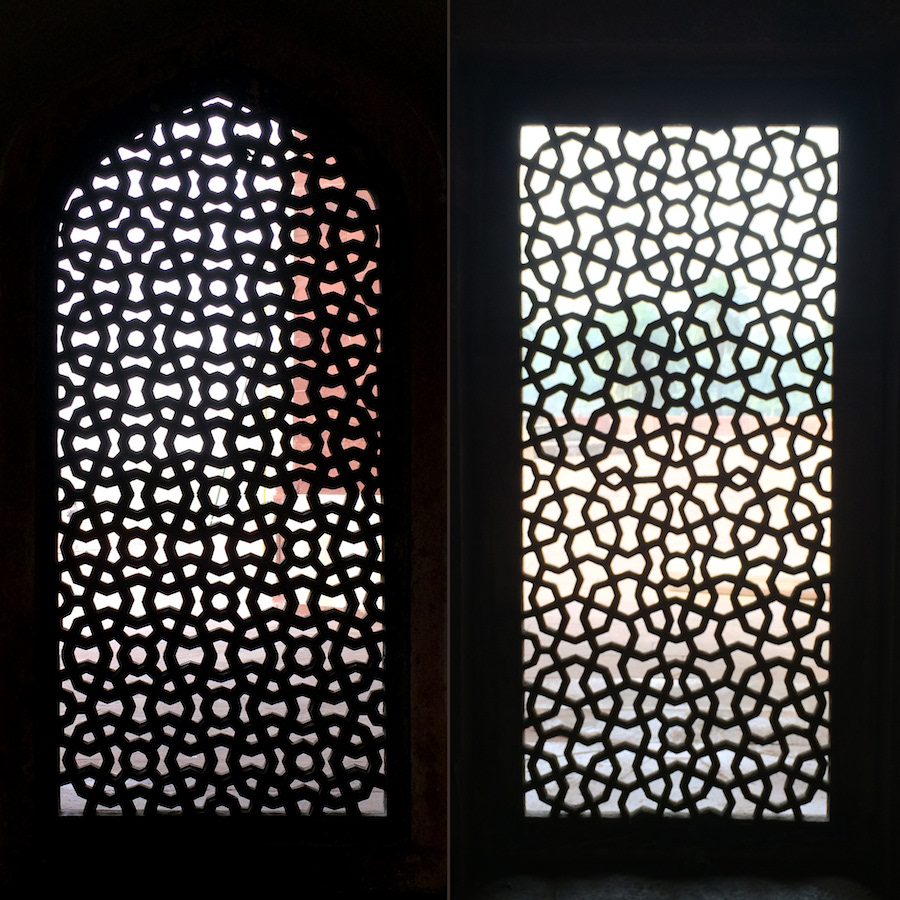
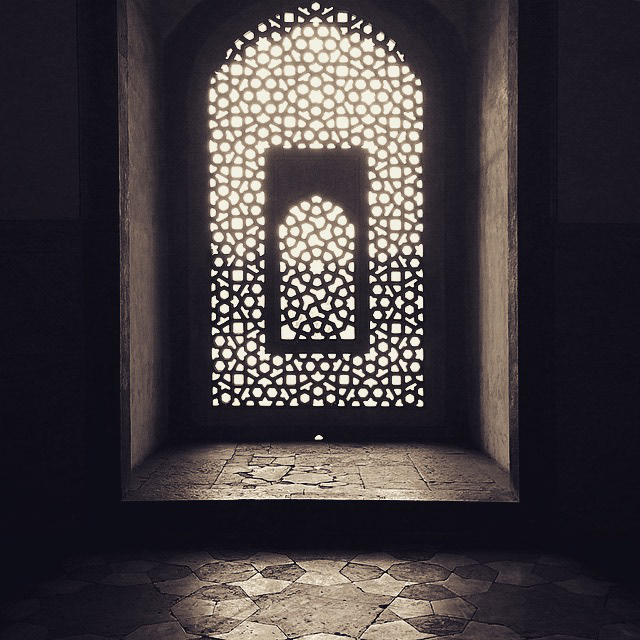
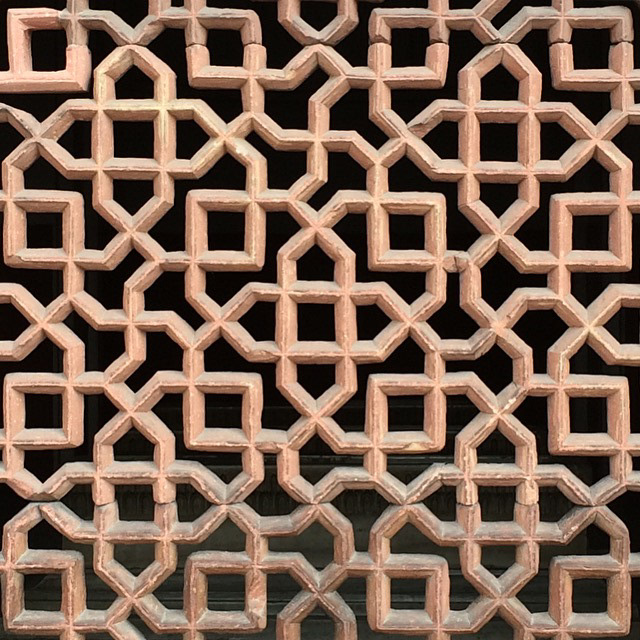
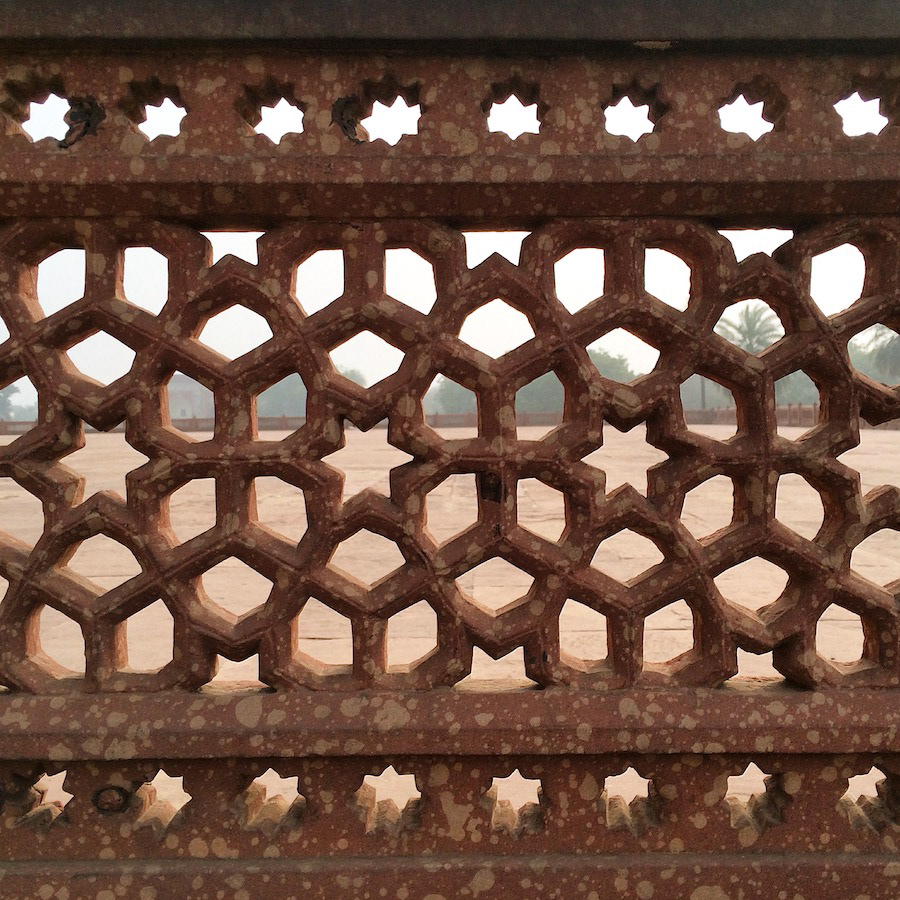
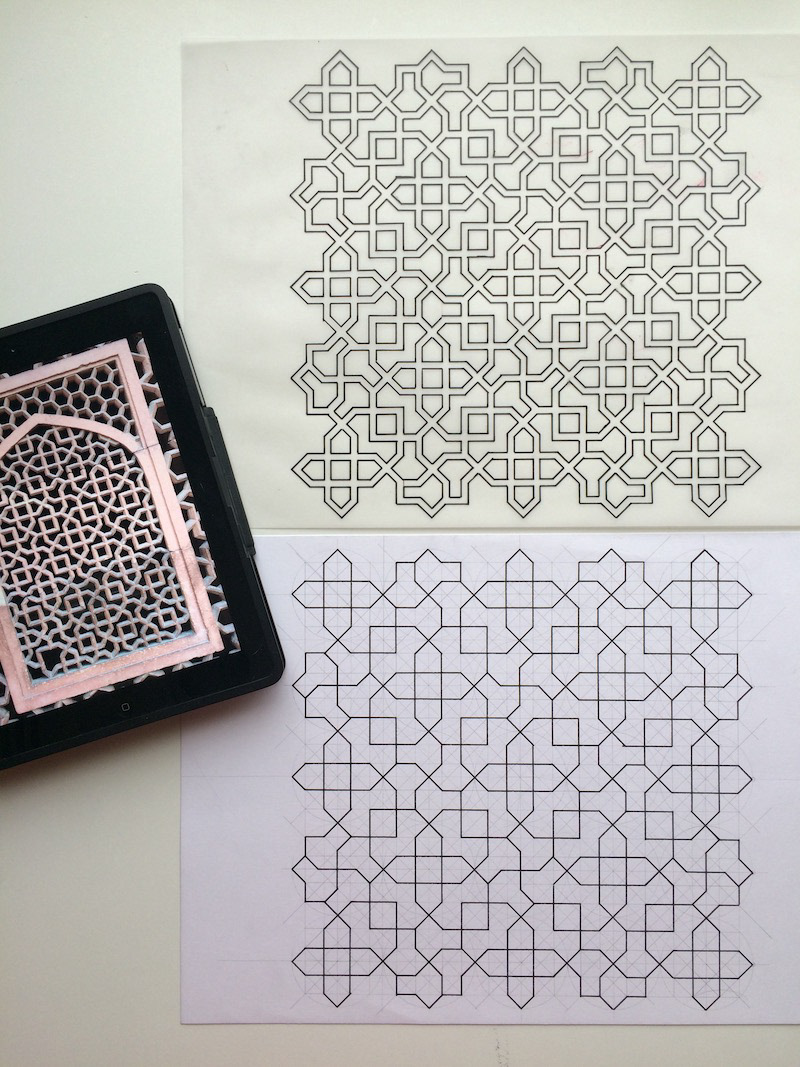
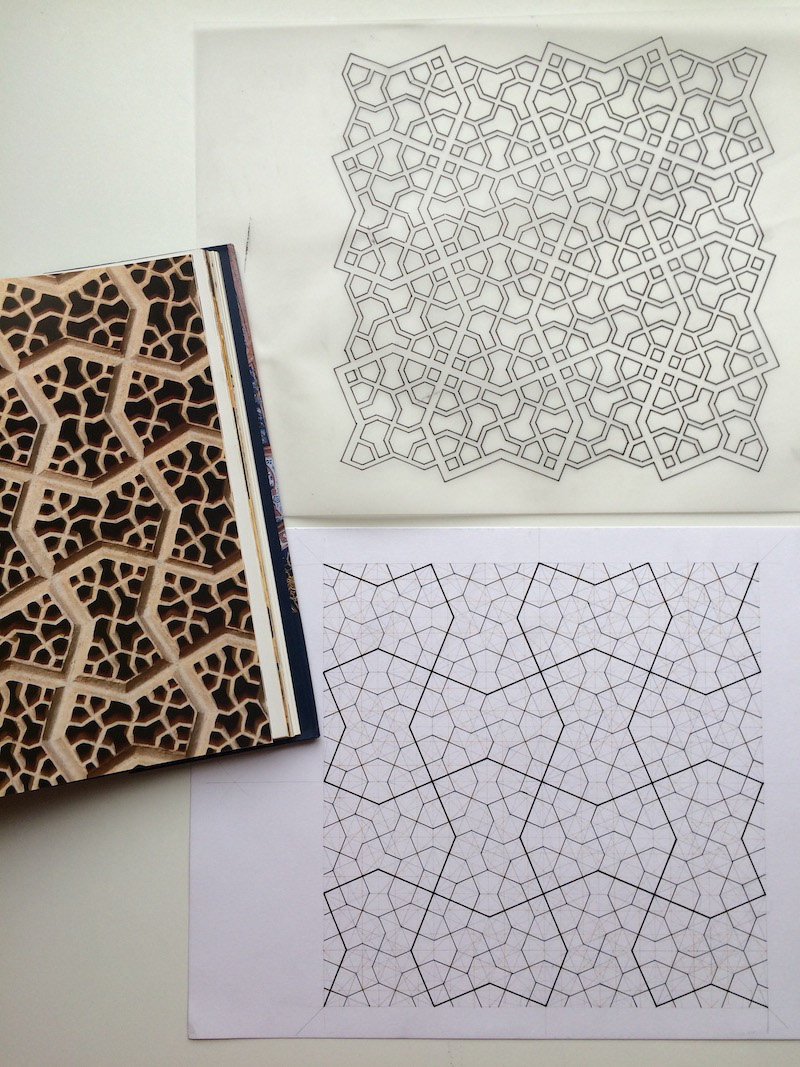
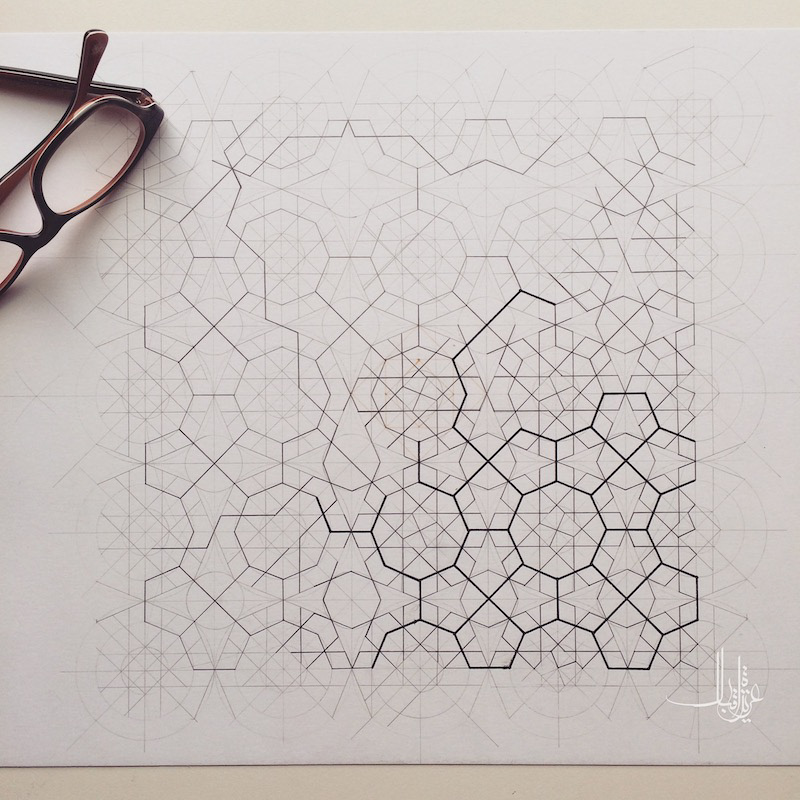
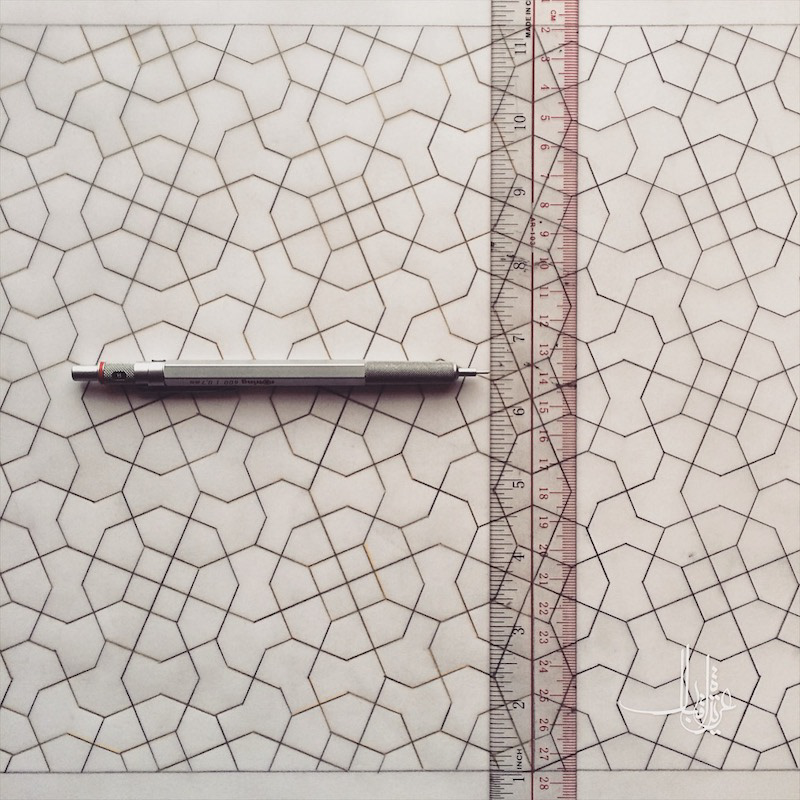

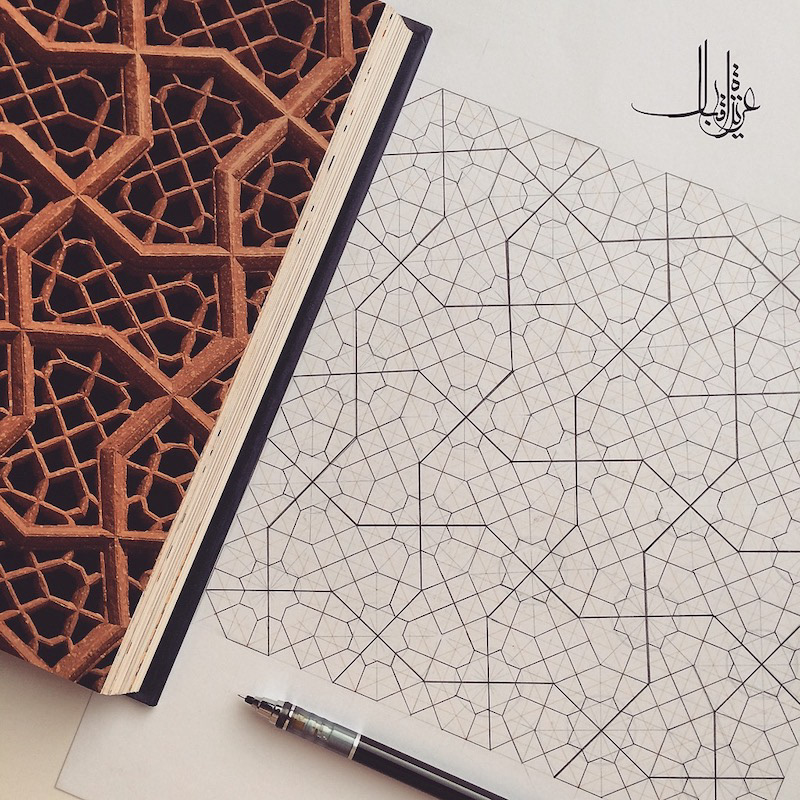
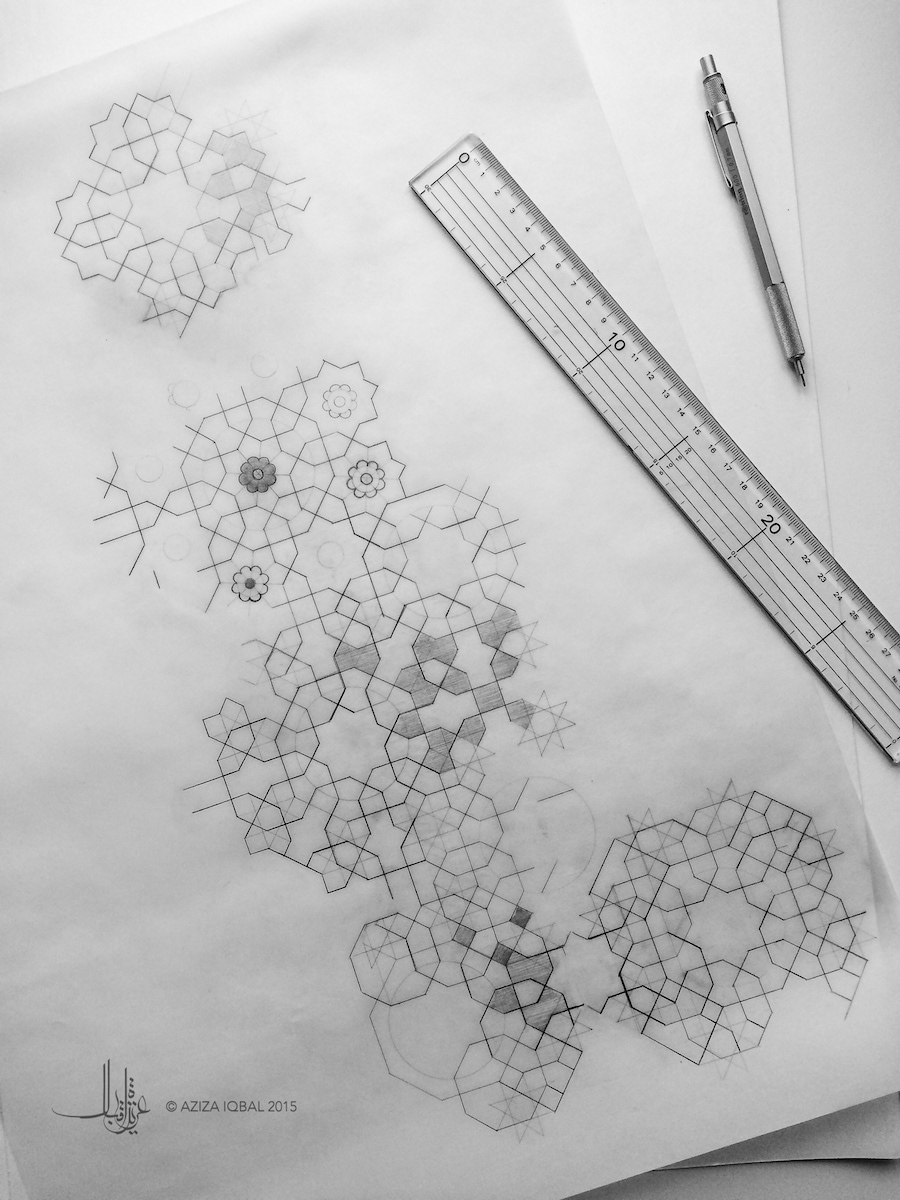
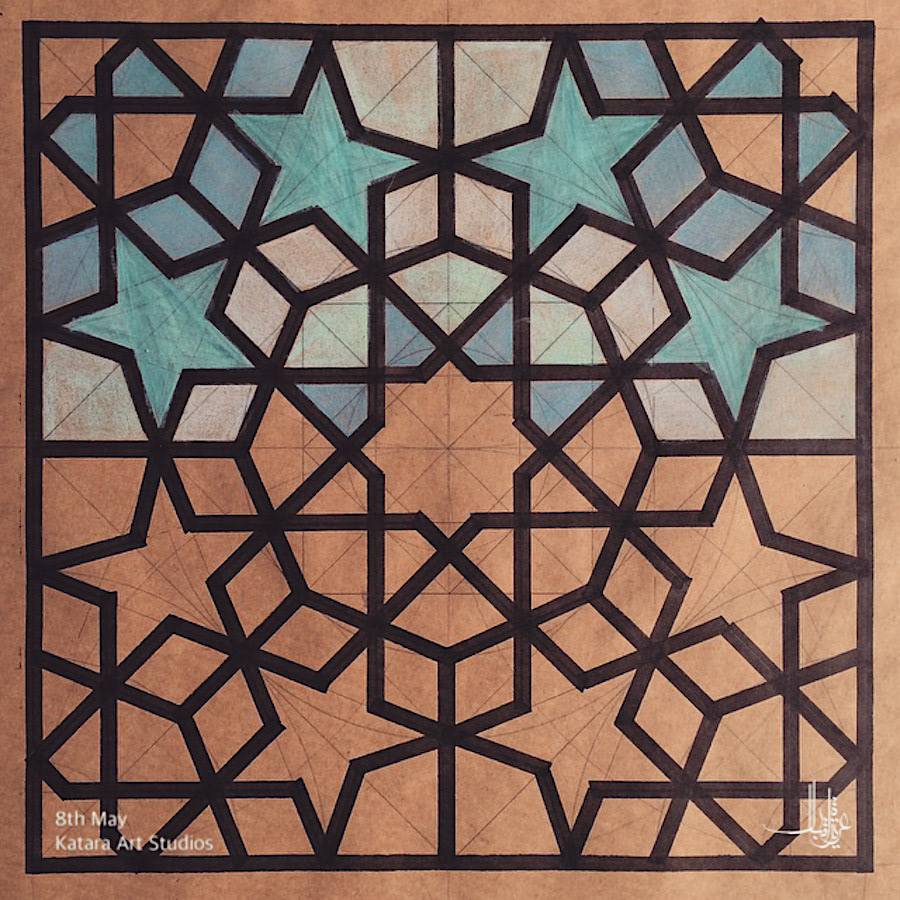
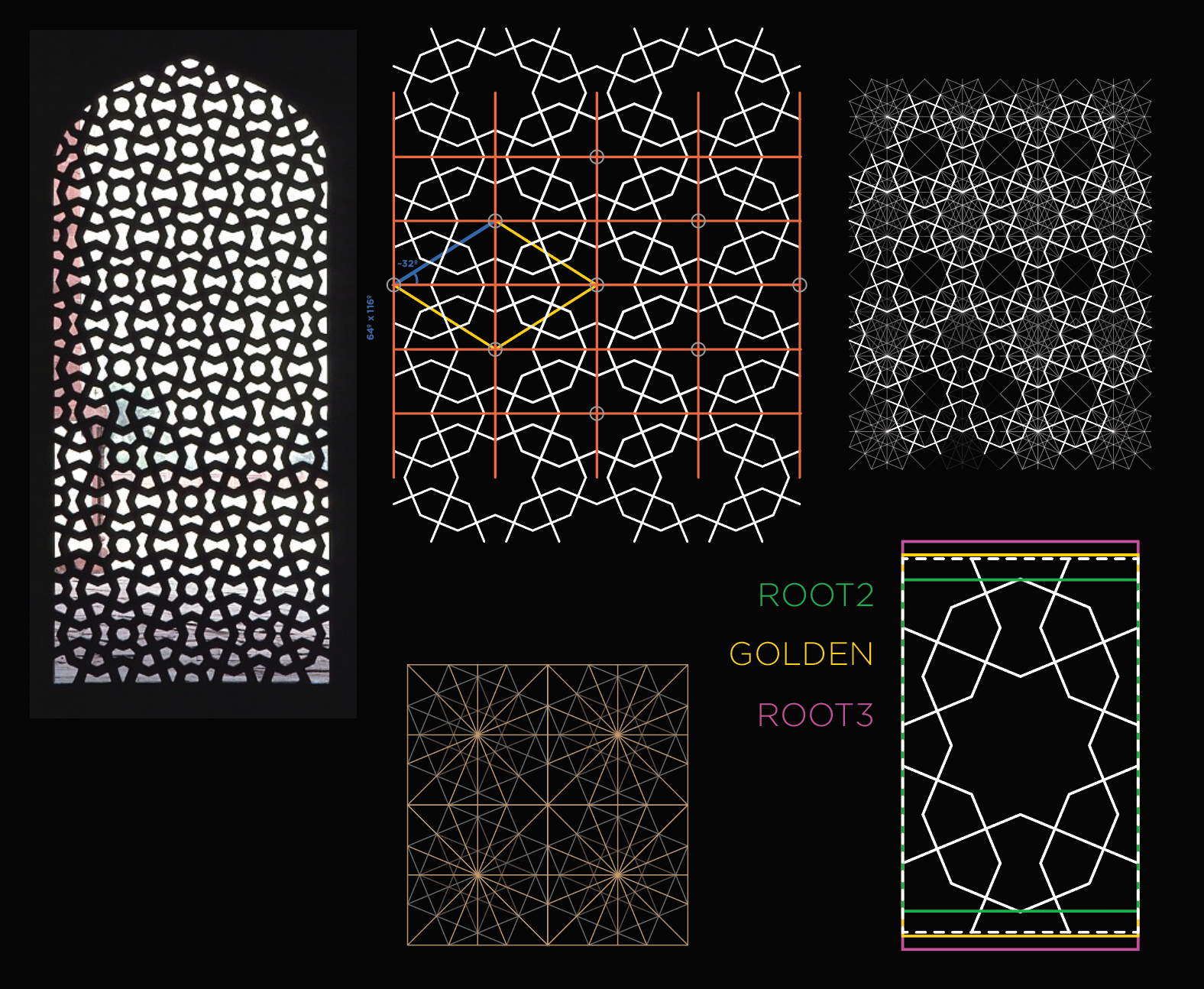
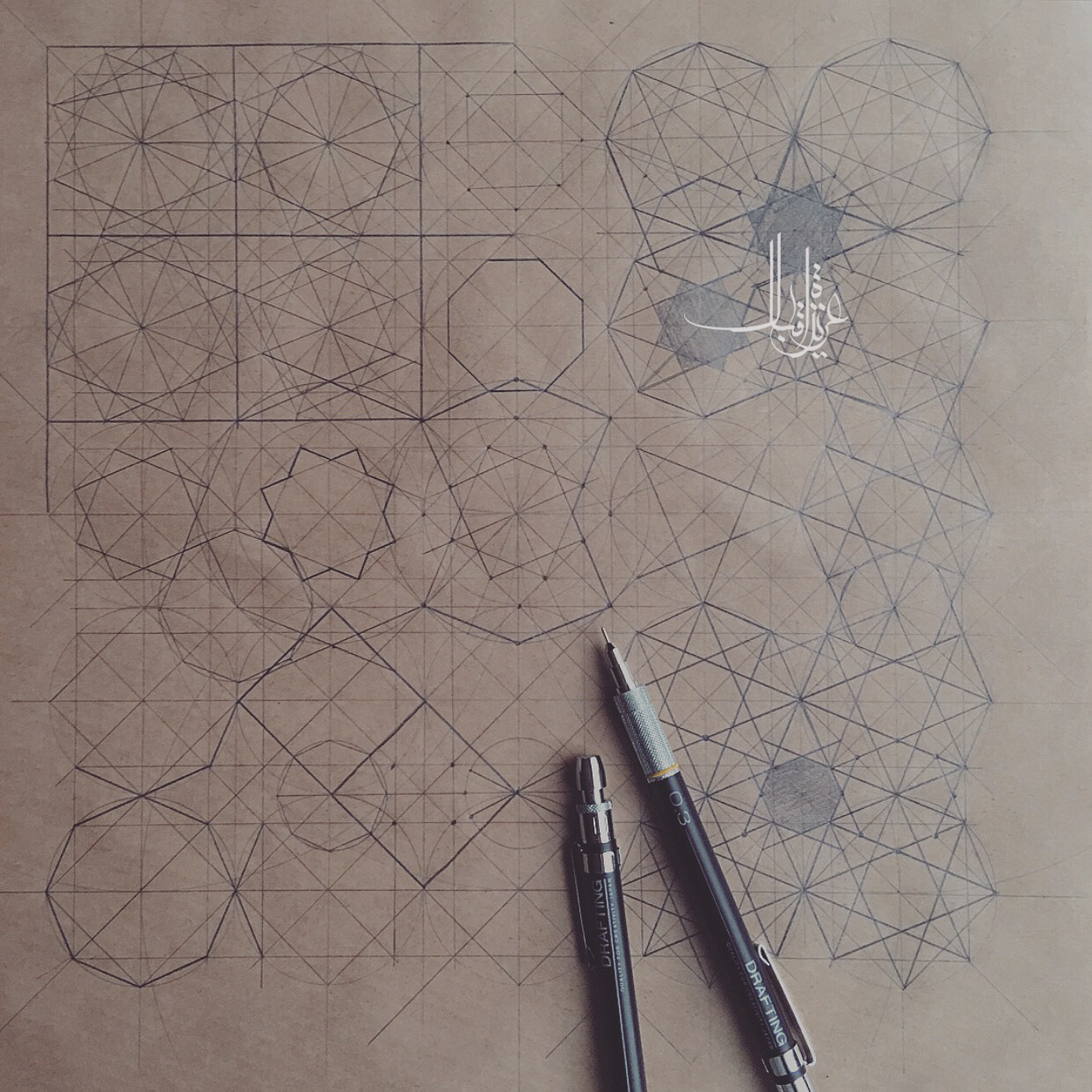
Analysis by Richard Henry
Analysis by Richard Henry
BAHAR
The ocean on paper
2015
Watercolour study on mixed-media paper
Pattern from Humayun's Tomb
25cm x 25cm
yaqoot
Rubies on paper
2015
Watercolour study on mixed-media paper
Pattern from Humayun's Tomb
25cm x 25cm
Humayun's tomb 002
2015
Gouache on mixed-media paper
Pattern from Humayun's Tomb
42cm x 29.7cm
Al HADID, 57
2015
Gouache on paper
Pattern from Iti'mad ud Daula
32cm x 32cm
Al Mulk, 67
2015
Gouache on paper
Pattern from Humayun's Tomb
32cm x 32cm
PROLOGUE: THE LIGHT WITHIN I
2016
Gouache and gold leaf on tea-stained paper
Pattern from Fatehpur Sikri
30cm x 30cm
PROLOGUE: THE LIGHT WITHIN II
2016
Gouache and silver leaf on tea-stained paper
Pattern from Isa Khan Tomb
25cm x 25cm
MUSEUM OF ISLAMIC ART COLLECTION
From the Imperial Threads Exhibition, 2017
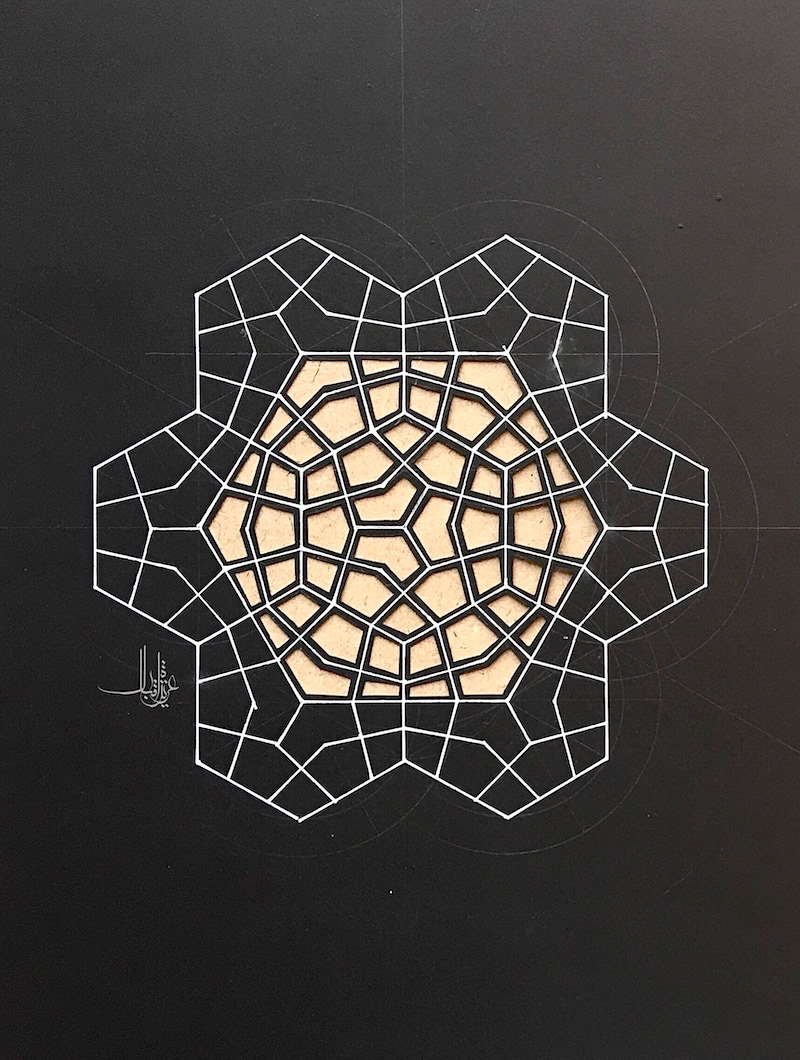
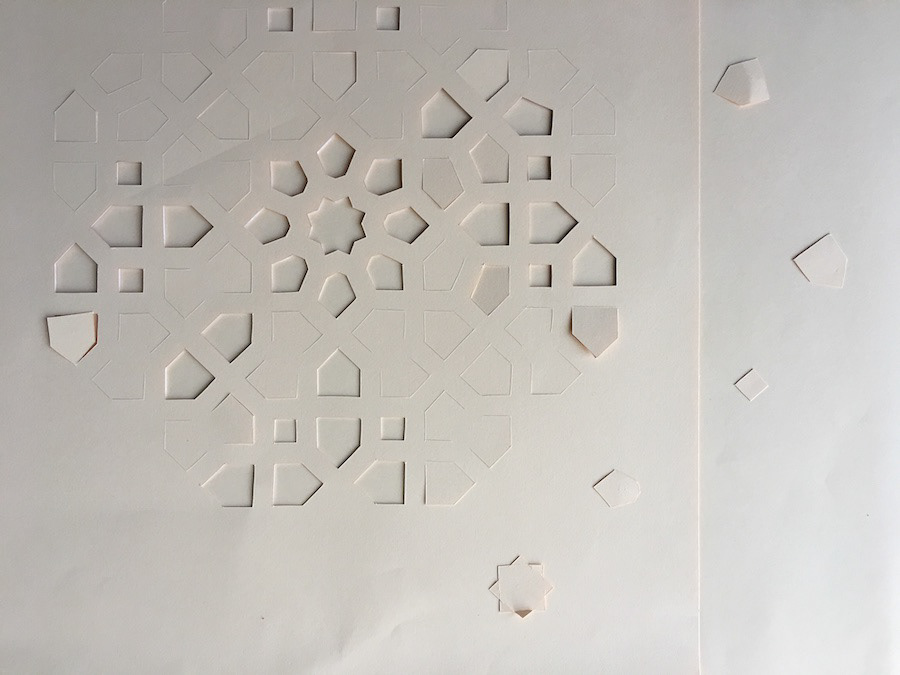
MIA jaali
2017
Watercolour on 100% cotton khadi paper
Pattern from the collection at Museum of Islamic Art, Doha
21cm x 29.7cm
CIARO PENTAGONS
2017
Watercolour on paper
Pattern from Fatehpur Sikri
25cm x 25cm
Humayun's Tomb 003
2019
Watercolour and 22k gold leaf on 100% cotton paper
Pattern from Humayun's Tomb
38cm x 38cm
